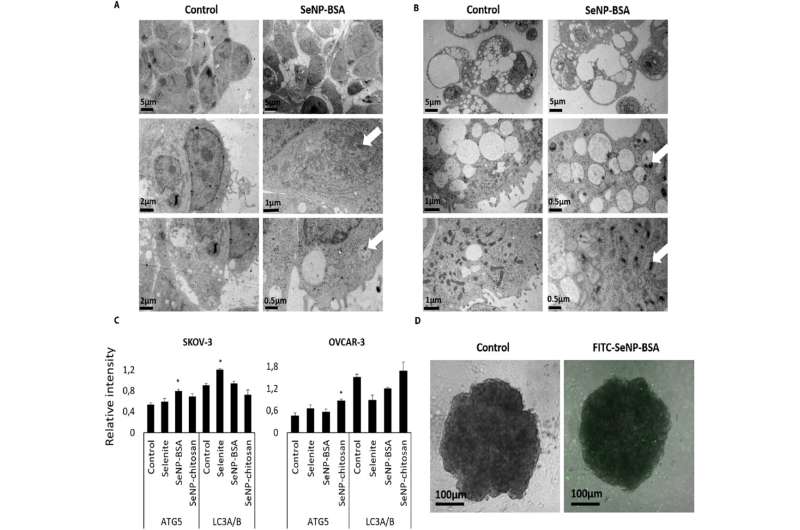This article has been reviewed according to Science X's editorial process and policies. Editors have highlighted the following attributes while ensuring the content's credibility:
fact-checked
trusted source
proofread
International team examines how selenium could help in fight against ovarian cancer

Selenium is a micronutrient that plays an essential role in human health but is toxic at high levels. However, new biomedical research has shown selenium actually has anti-cancer properties when used at high doses.
To overcome problems with its inherent toxicity, an international research team, led by Professor Steve Conlan in Swansea University and Professor Laurent Charlet at Université Grenoble Alpes, tested whether selenium nanoparticles could be developed as a potential cancer treatment. Their findings have just been published in the journal Redox Biology.
The researchers demonstrated that the selenium nanoparticles were very effective at killing ovarian cancer cell models grown in 3D to replicate the native tumor environment.
They went on to discover a novel biological mechanism underpinning how selenium is likely to cause this anti-cancer effect. They found that selenium causes changes in the activity of enzymes called histone methylatransferases. These enzymes regulate epigenetic processes—how environmental conditions can alter the way genes work. Unlike genetic mutations, epigenetic changes do not change the sequence of DNA and are reversible, but they do change how your body reads a DNA sequence.
This research was carried out by Dr. Benoit Toubans, as part of his joint Ph.D. project supported by the Swansea-Grenoble strategic partnership, and Dr. Noor Al Kafri, a CARA fellow in Professor Conlan's laboratory, together with collaborators at the synchrotron facility in Grenoble and the University of Stuttgart.
Professor Conlan, who heads the Reproductive Biology and Gynecological Oncology group at Swansea University Medical School, described the project as a tremendous scientific research effort. "This is one of those quite rare moments when you realize the team have made a novel biological discovery. Noor and Benoit are incredibly talented scientists, and only through their skill and dedication were we able to make this advance. The Swansea-Grenoble partnership demonstrates clearly how international and interdisciplinary partnerships lead the way in scientific discovery."
The team hopes this discovery will provide new insights into the action of selenium nanoparticles and says it is now important to consider both the classic antioxidant and novel histone methylation effects of selenium and its development as a cancer therapy
More information: Benoit Toubhans et al, Selenium nanoparticles modulate histone methylation via lysine methyltransferase activity and S-adenosylhomocysteine depletion, Redox Biology (2023). DOI: 10.1016/j.redox.2023.102641
Provided by Swansea University




















